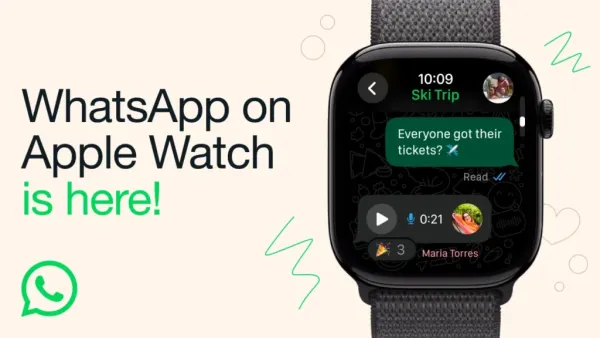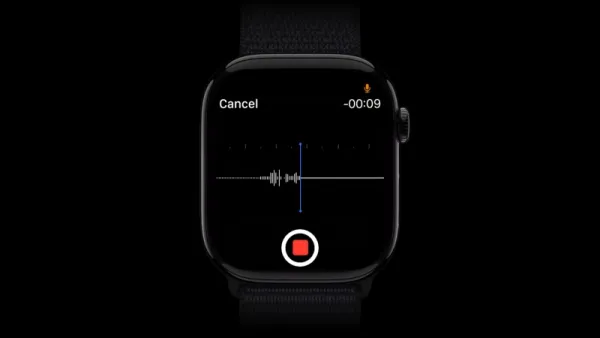
Highlights
- WhatsApp now lets users instantly read voice messages as text.
- On-device AI transcription ensures complete privacy and no cloud upload.
- Supports multiple languages, including Hindi, English, and Spanish.
- Designed for accessibility, especially for hearing-impaired users.
- Rolls out globally on Android and iOS, working even offline.
WhatsApp has announced that the global rollout of its voice message transcription feature is underway, enhancing how users engage with the world’s most popular messaging platform. The new feature allows users to read voice messages as text, effectively transforming one of WhatsApp’s most widely used features into a more flexible, inclusive, and ultimately private option.
Listening to Reading: How the Feature Works
Voice message transcription on WhatsApp will now let users turn a received voice note into written text directly in the chat window. On receiving a voice note, as mentioned, users now have the option to “Read Transcript”. Clicking the button displays a transcript of what was spoken to the user, shown as text below the message bubble.

What sets this innovation apart from similar features in other apps is the speed and accuracy it provides. The voice message transcription runs locally on the user’s device using state-of-the-art speech recognition algorithms developed by Meta’s AI teams, meaning the message content is processed in real time and never leaves the user’s phone. This combination of on-device transcription and Meta’s end-to-end encryption model continues to secure user privacy.
Users who frequently receive voice messages in loud environments, such as meetings or classrooms, can now read them instead of broadcasting them through speakers in front of a group or in a public setting. For users who are hard of hearing, this feature creates a much more accessible WhatsApp messaging experience.
Apple Watch Support: Read Transcripts from Your Wrist
The update also extends to the Apple Watch, enabling users to view the transcript of a voice message directly on their wrist. Once a voice note arrives in WhatsApp and transcription is enabled, simply glancing at your Apple Watch displays the text version — ideal for silent environments like meetings, classrooms, or commuting. The entire process runs locally on-device, ensuring no audio leaves the Apple ecosystem and maintaining WhatsApp’s strong privacy protection.
Privacy at the Forefront
Privacy has always been a bedrock of WhatsApp’s design philosophy, and this continues with our announcement that voice message transcription occurs entirely on the device (with no audio uploaded to any Meta servers).
Not only does this approach maintain the end-to-end security of this function, but it also aligns with WhatsApp’s vision of granting users control over their data. The transcripts are only stored on the device and can be deleted by the user at any time.
By focusing on on-device AI, WhatsApp is distinguishing itself from the competition as the leader in privacy-preserving machine learning, delivering similar innovative features without compromising user data.
Multi-Language Support and Future Updates:
When launched, the feature will support multiple major languages, including English, Spanish, Hindi, Portuguese, and Arabic, with more to come in the future. Meta’s engineers are currently looking to increase the number of supported languages as the feature is updated.
This multilingual design aligns with WhatsApp’s fundamentally global user base, which often prefers sending voice messages rather than typing text, given regional vernacular and habits.
Where Is it Available and How Will it Roll Out?
It is being rolled out globally on both Android and iOS. Users will automatically receive the feature as part of an upcoming WhatsApp update.
Once received, the first time the app opens, users will see a message prompting them to enable “Transcribe Voice Messages” in settings. Once active, the transcripts of voice notes will instantly be below the audio message, laid out nicely for reading/copying.
An important note: the voice message transcription process does not require an internet connection; all computation occurs offline. This is particularly useful for low-connectivity users, a key section of WhatsApp’s two billion-plus active user base.
AI and Accessibility: The Larger Implications
The addition of voice message transcription is part of Meta’s continuing push for AI-fueled accessibility features across its platforms. It seems intended to accompany features such as changing the playback speed of voice messages, chat filters, and message pinning.
By allowing users to choose between listening and reading, WhatsApp creates a bridge between the convenience of audio and the convenience of text-based communication. For many professionals and students, it also means easier note-taking, easier referencing, and easier sharing of the information without having to replay the audio.
Accessibility advocates have already praised this update for its inclusive design, which can be empowering for users with hearing impairments and non-native speakers.
A Step to Smarter Messaging
The update may be the latest incremental step in WhatsApp’s transition from a basic messaging tool to a more innovative, contextually-aware communication platform. Based on similar moves already made by Meta (through its integration of AI assistants and generative text tools) to develop intelligent communication, features such as voice message transcription may lay the groundwork for additional robust and compelling features—such as audio content that is searchable by topic, smart summaries of content based on user input, or someday for non-native speakers, the ability to translate voice notes into the user’s language.
These foundational features underscore WhatsApp’s continued dedication to privacy, practicality, and thoughtful innovation in AI and communications. WhatsApp continues to define the standard for secure, intelligent communications.
Concluding Remarks
The rollout of voice message transcription is WhatsApp fulfilling one of the most requested user features while simultaneously committing to its promises of user privacy and inclusivity. Whether it’s reading a voice note during a meeting, catching up on messages in a crowded train, or making WhatsApp accessible to someone with hearing issues, this simple update shows that you don’t have to sacrifice privacy for innovation.
The voice message transcription update is a decisive step that contributes to WhatsApp’s ongoing and consistent effort to leverage AI to improve the user experience and make updates quicker and easier to communicate privately, safely, and more practically for daily use.
-
Sussanne Khan's Fitness Journey: How Discipline Transforms Lives

-
Exciting Action Thriller 'The Trainer' Wraps Up Shooting in Chennai

-
Harshvardhan Rane Takes John Abraham's Force Franchise Forward After Ek Deewane ki Deewaniyat Success

-
Kerala: Woman arrested for throwing baby boy into well

-
Concerns Arise Over Heavy Vehicle Licensing After Jaipur Accident
